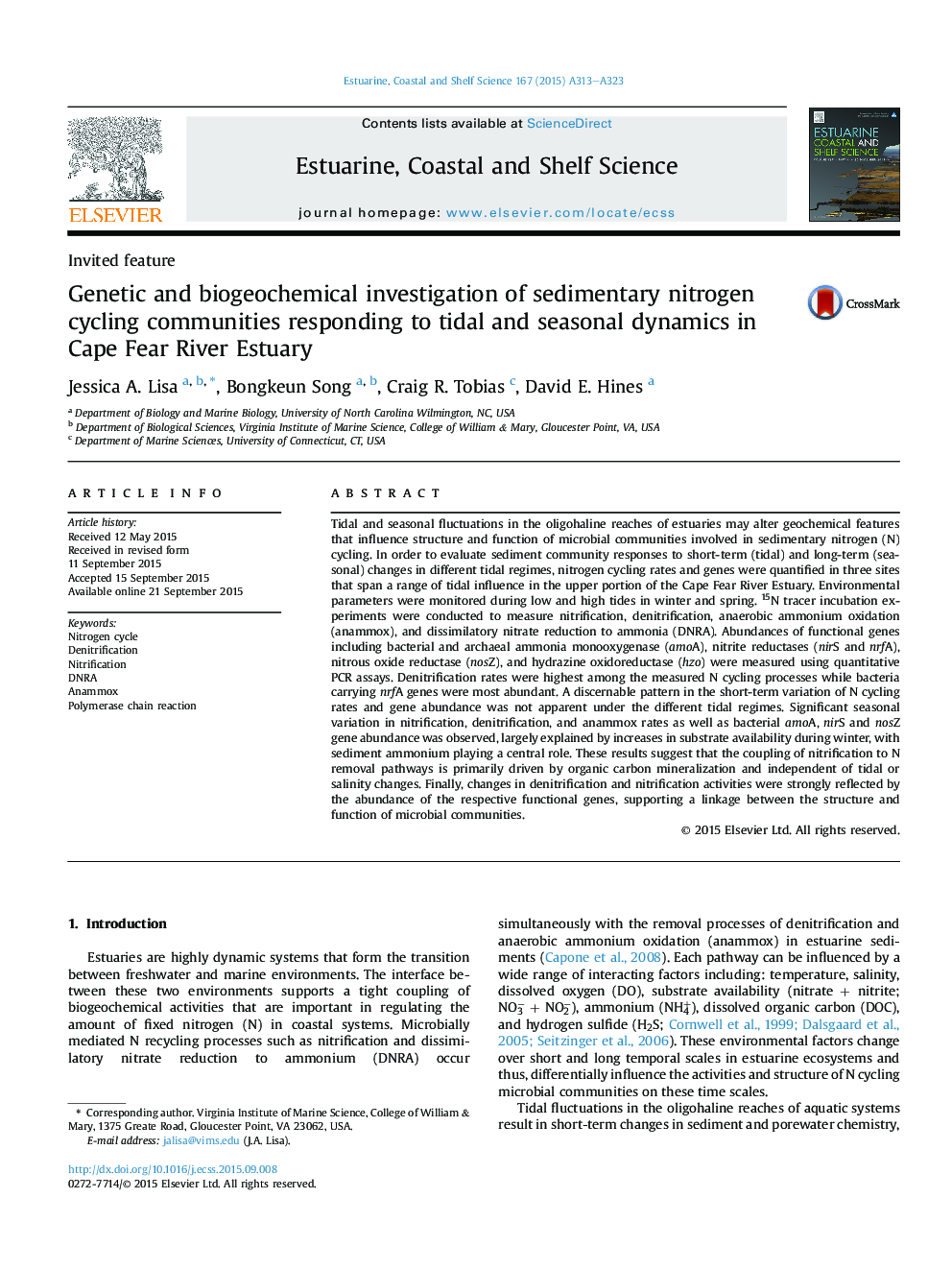| کد مقاله | کد نشریه | سال انتشار | مقاله انگلیسی | نسخه تمام متن |
|---|---|---|---|---|
| 4539332 | 1326591 | 2015 | 11 صفحه PDF | دانلود رایگان |

• Nitrogen cycling rates and genes were quantified seasonally at low and high tides in the upper CFRE.
• Denitrification rates were highest among the measured N cycling processes.
• Bacteria carrying nrfA genes were most abundant.
• The abundance of microbial members determines the magnitude of nitrification and denitrification.
• Nitrification coupled to removal pathways is driven by organic carbon mineralization.
Tidal and seasonal fluctuations in the oligohaline reaches of estuaries may alter geochemical features that influence structure and function of microbial communities involved in sedimentary nitrogen (N) cycling. In order to evaluate sediment community responses to short-term (tidal) and long-term (seasonal) changes in different tidal regimes, nitrogen cycling rates and genes were quantified in three sites that span a range of tidal influence in the upper portion of the Cape Fear River Estuary. Environmental parameters were monitored during low and high tides in winter and spring. 15N tracer incubation experiments were conducted to measure nitrification, denitrification, anaerobic ammonium oxidation (anammox), and dissimilatory nitrate reduction to ammonia (DNRA). Abundances of functional genes including bacterial and archaeal ammonia monooxygenase (amoA), nitrite reductases (nirS and nrfA), nitrous oxide reductase (nosZ), and hydrazine oxidoreductase (hzo) were measured using quantitative PCR assays. Denitrification rates were highest among the measured N cycling processes while bacteria carrying nrfA genes were most abundant. A discernable pattern in the short-term variation of N cycling rates and gene abundance was not apparent under the different tidal regimes. Significant seasonal variation in nitrification, denitrification, and anammox rates as well as bacterial amoA, nirS and nosZ gene abundance was observed, largely explained by increases in substrate availability during winter, with sediment ammonium playing a central role. These results suggest that the coupling of nitrification to N removal pathways is primarily driven by organic carbon mineralization and independent of tidal or salinity changes. Finally, changes in denitrification and nitrification activities were strongly reflected by the abundance of the respective functional genes, supporting a linkage between the structure and function of microbial communities.
Figure optionsDownload high-quality image (259 K)Download as PowerPoint slide
Journal: Estuarine, Coastal and Shelf Science - Volume 167, Part B, 20 December 2015, Pages A313–A323